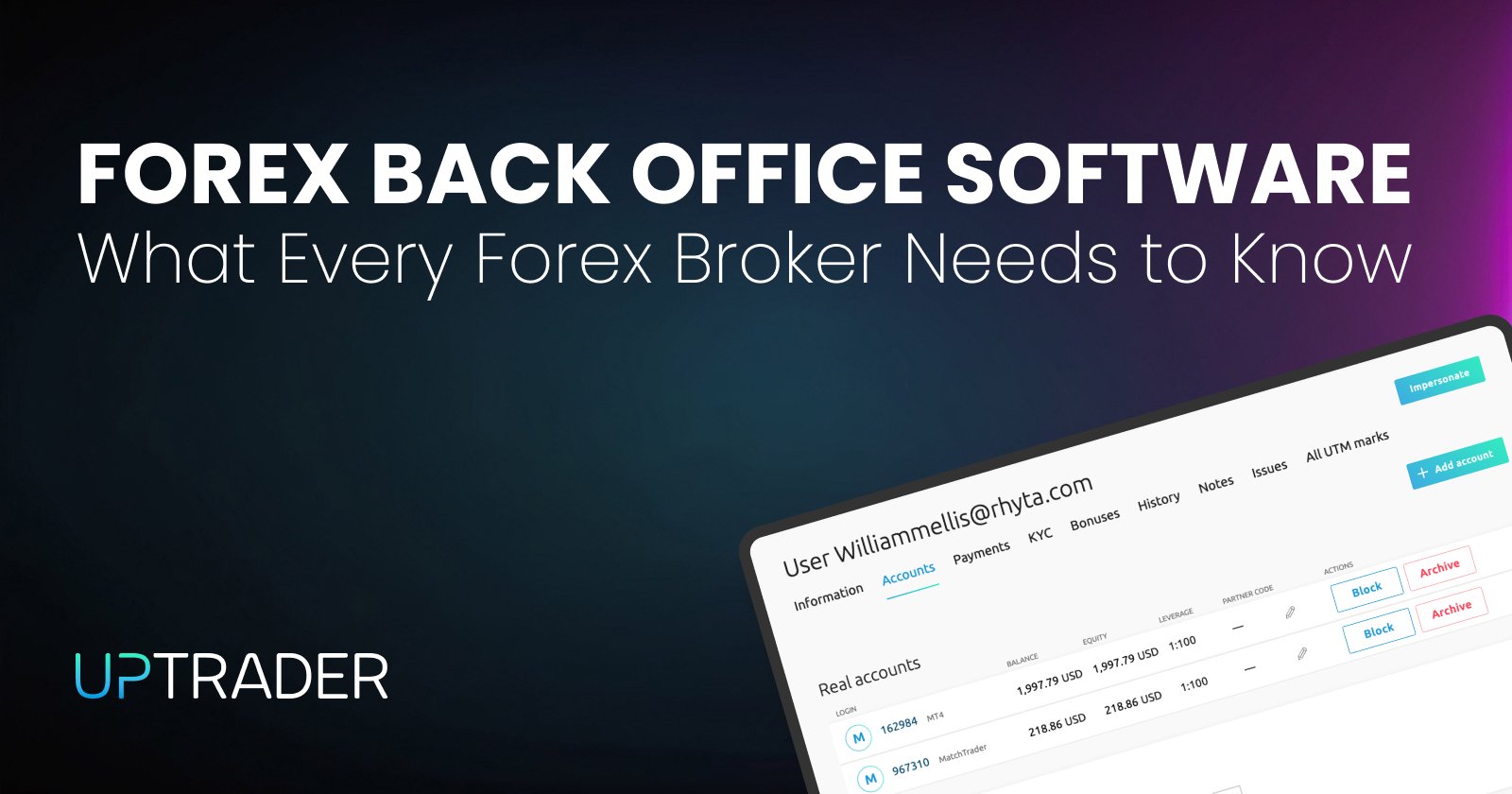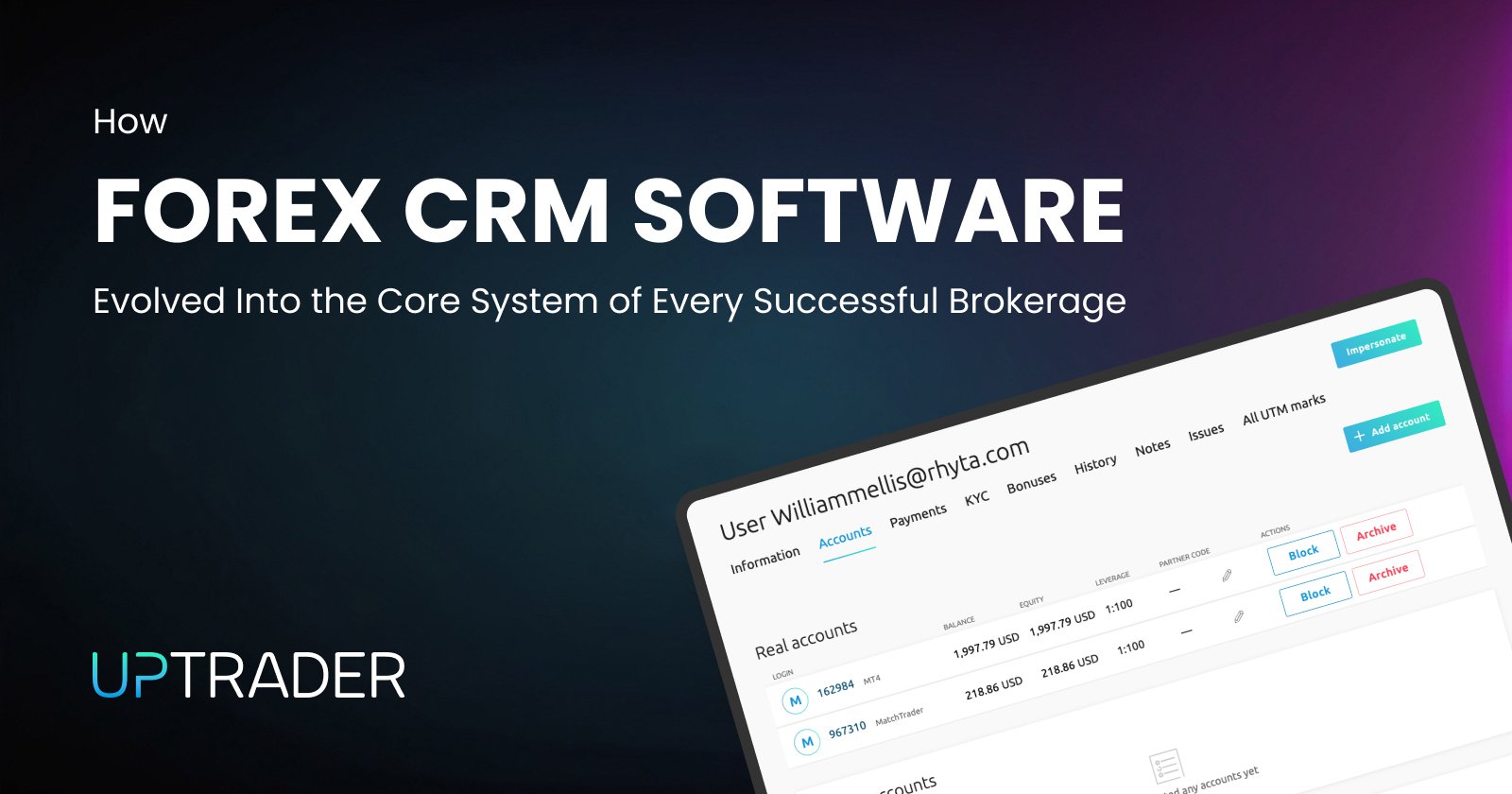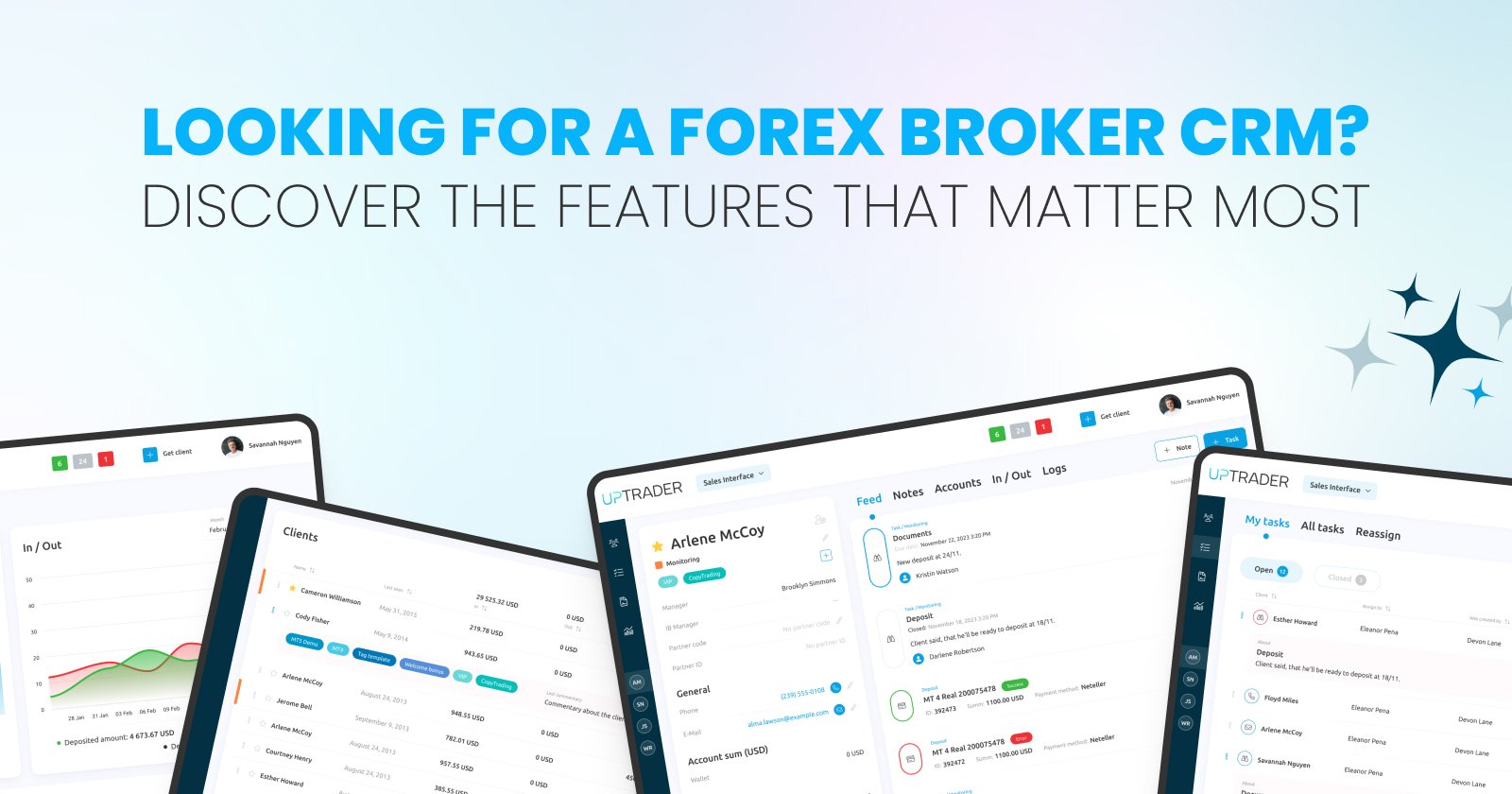Forex Back Office Software: What Every Forex Broker Needs to Know

Share this publication:
The FX market has been expanding for the last two decades, and this has been greatly attributed to technological developments, the rise of the internet, and more investors wanting to engage in the global marketplace. For a Forex brokerage, it is vital to have smooth operations and establish a good management structure in order to be competitive. More so, an efficient and effective Forex Back Office Software is one of the significant features of a successful brokerage firm.
What is Forex Back Office Software?
Forex back office software is an all-in-one tool for everyday usage in a foreign exchange brokerage firm. As a business, the back office of a forex brokerage consists of all necessary processes to ensure its effectiveness: maintaining user accounts and adhering to various regulatory standards, execution of orders, order processing, and payment processing. The software combines several sub-systems aimed at improving the overall efficiency of the operations of the management; such systems include client management, risk management, compliance, reporting, and accounting.
Forex back office systems allow brokers to work with a huge volume of information and handle the intricacies of trading operations with ease. The use of forex back office software allows brokers to minimize the risks as well as encourage productivity and service delivery by the use of technology, which eliminates many manual processes that are susceptible to human mistakes.
Benefits of Forex Back Office Software
Enhanced Efficiency and Reduced Operational Costs: Automating back office functions leads to substantial cost savings. With automation, brokers can handle larger volumes of transactions with fewer human resources, reducing the chances of manual errors and minimizing operational costs. Automation also shortens the time required for KYC verification, onboarding, and fund transfers, allowing brokers to focus on customer acquisition and retention.
Improved Risk Management: Back offices likewise support the front office and enhance the prospects of making successful forex trades. When required to monitor such developments constantly, the chances of a broker making a loss from their investments are lowered significantly since they can manage these risks in real-time. By keeping an eye on the trading patterns and the level of exposure, the brokers can act sooner in dealing with losses and increasing or decreasing the leverage in order to provide a more secure trading atmosphere.
Enhanced Compliance: Different states have differing regulatory frameworks. Therefore the majority of Foreign Exchange Back Office incorporates already existing solutions for regulatory risk management or inclusion of new systems for such risk management to allow revolution in a foreign broker’s KYC, AML, and GDPR processes. This provides a security blanket against the risks of being fined due to noncompliance and also boosts the confidence of clients who are wary of dealing with unscrupulous brokers.
Data-Driven Decision Making: Access to real-time reports and analytics helps brokers monitor performance measures, activity of clients, and trading statistics. This helps reduce business operational bottlenecks and enhances business growth and expansion in any organization. For instance, a broker knows how to differentiate between clients with value and those without, thereby focusing on the former to measure returns on investments and other costs incurred.
Improved Client Satisfaction: With an efficient Fx back office solution, clients experience shorter periods assigned for KYC procedures, faster answers to help desk tickets and smooth payment processes. Clients experience such improvements in service provision due to whether brokers can handle effectively deposits, withdrawals, or even questions about customers adequately.
Choosing the Right Forex Back Office Solution
Compliance and Regulatory Support: Make sure that the back-office solution provides infrastructure supporting the regulations. Focus on tools that assist client onboarding processes such as KYC/AML/GDPR to onboard clients without running into compliance risk issues. Some systems even have regulatory compliance tool that automatically updates when changes in client’s risk update.
Integration Capabilities: A forex back office solution should be able to connect with your brokerage’s other systems i.e., CRM, trading platform, or payment processors. Integration provides a simple way of data entry but also ensures that the systems are interconnected to enhance the client experience.
Security and Data Protection: The safety of clients’ information ranks high among forex brokers. Use a back-office solution that maintains high-end safety features such as data encryption, 2fa, and access control to a particular role. Regular security checks and compliance with data protection practices such as the GDPR help in gaining clients’ confidence.
User-Friendly Interface: An overly complicated and poorly designed back office system will slow down the productivity of the employees. Seek out a Forex back office solution with a simple and user-friendly interface for your team. This will mitigate training expenses and such employees will adjust to the system faster, improving productivity in the organization.
Cost and Scalability: Consider your brokerage’s budget and growth plans when choosing back-office software. Some providers offer tiered pricing plans based on the number of active clients or transaction volumes. Additionally, choose a solution that can grow with your business, allowing you to add features or users as your brokerage expands.
Customization Options: No two forex brokerages are alike. Able to adapt are those claiming to provide forex back office solutions should provide adaptive solutions. Customization options may include personalized workflows, customized reporting templates, and risk management tools.
Customer Support and Training: Support for customers is critical, particularly in the early phases of use such as the implementation and onboarding phase. A provider with strong support offering different forms such as email, phone, or live chat should be considered. Also, the inclusion of extensive training materials or guides will enable the team to make the best use of the application.
Top Forex Back Office Solutions
There are several forex back office solutions on the market today, each offering a variety of features and capabilities. Here’s an overview of some popular options:
UpTrader
UpTrader is a comprehensive back office software solution that offers a powerful suite of tools tailored to the needs of forex brokers. UpTrader’s back office system integrates seamlessly with cTrader and DXTrade trading platforms, making it easy for brokers to manage accounts, monitor trading activity, and oversee compliance in real-time. It includes a full-featured CRM, robust KYC and AML tools, and integrated payment solutions, making it ideal for managing client onboarding, risk assessment, and daily operations.
UpTrader also provides customizable reporting, which allows brokers to generate detailed analytics on customer activities, trading performance, and revenue metrics. Additionally, UpTrader's multi-level access control makes it easy to delegate specific tasks to different departments while maintaining data security. For brokers seeking scalability, UpTrader offers modular options to customize features and functions according to their specific business needs, enabling the software to grow with the brokerage.
If you want to try UpTrader, you can request a demo by talking to a consultant on our site!
Forex CRM by FX Back Office
FX Back Office provides an all-in-one CRM and back office software solution for forex brokers. It includes modules for client management, risk assessment, compliance, and reporting. Known for its user-friendly interface and integration capabilities, it’s a popular choice for brokers of all sizes.
Tools for Brokers (T4B) Back Office
T4B Back Office offers a comprehensive suite of tools designed for forex brokers, including client management, compliance, and analytics. T4B's software is modular, allowing brokers to choose the features that best suit their needs.
Skale CRM
Skale CRM is a scalable forex back office solution designed for brokers looking to streamline their operations. With features for lead management, KYC, and data analysis, Skale CRM supports brokers in managing client relations and improving operational efficiency.
Leverate’s LXLite
LXLite by Leverate is a back office solution that provides client management, compliance, and payment processing features. Known for its user-friendly design and customizable modules, LXLite integrates with various trading platforms and supports multiple currencies.
Conclusion and Final Thoughts
Investing in a high-quality FX back office system is one of the most important decisions that any broker should make if he wants to improve efficiency, control risks, and be compliant with various regulations. The appropriate back office solution will help in optimizing the workflow reducing the cost of operations and enhancing quality service delivery to the clients. The brokers must analyze the market for their requirements and some of the crucial features to look for include compliance, integrations, and safety when sourcing for the best forex back office solution.
With the challenges and the regulations getting tougher than ever in the forex business, it is no longer an added value to have a good FX back office solution, rather it is a must. Brokers get to achieve this because properly selected software liberates them from administrative burdens allowing for more focus on improvements and growth, and ultimately the clients being served best.
If you are willing to take advantage of incredible features like CRM solutions, MAM and PAMM modules, Affiliate Programs, and Copy Trading platforms, then talk to a consultant on our site, or try UpTrader today.







